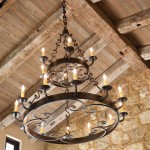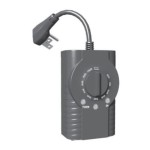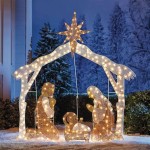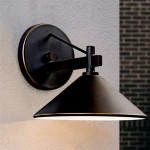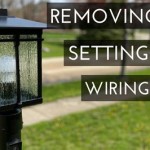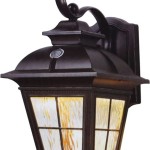What Is The Best Material For Outdoor Flooring?
Selecting the optimal material for outdoor flooring involves careful consideration of various factors, including climate, intended use, aesthetic preferences, budget, and maintenance requirements. No single material universally reigns supreme; the “best” choice depends heavily on the specific context of the project. This article explores a range of popular outdoor flooring materials, examining their advantages and disadvantages to provide a comprehensive understanding and facilitate informed decision-making.
Durability stands as a paramount concern, particularly in regions experiencing extreme weather conditions. Outdoor flooring is constantly exposed to the elements: sunlight, rain, snow, and fluctuating temperatures can all contribute to material degradation. Therefore, materials offering robust resistance to fading, warping, cracking, and splintering are generally preferred. Furthermore, the level of foot traffic the flooring will endure significantly impacts material selection. High-traffic areas necessitate materials capable of withstanding constant wear and tear without showing signs of damage prematurely.
Aesthetic compatibility with the surrounding environment represents another crucial factor. The chosen flooring should complement the architectural style of the house and harmonize with the landscape design. The color, texture, and overall visual appeal of the material should contribute to a cohesive and aesthetically pleasing outdoor space. This often involves considering the existing color palette of the house's exterior, the type of landscaping features present, and the desired overall ambiance of the outdoor area.
Budget constraints inevitably influence the decision-making process. Outdoor flooring materials vary considerably in price, ranging from relatively inexpensive options like concrete pavers to more costly alternatives like natural stone. The initial cost, however, is not the only factor to consider. Long-term maintenance costs, potential repair expenses, and the material's lifespan should also be factored into the overall cost analysis. Investing in a more durable, albeit more expensive, material upfront may ultimately prove more cost-effective in the long run by minimizing future maintenance and replacement needs.
Maintenance demands represent another critical aspect of outdoor flooring selection. Some materials require minimal upkeep, while others necessitate regular cleaning, sealing, or staining to maintain their appearance and structural integrity. Homeowners should carefully assess their willingness and ability to perform the necessary maintenance tasks or budget for professional maintenance services. Neglecting proper maintenance can lead to premature deterioration, diminishing the lifespan of the flooring and potentially requiring costly repairs or replacement.
Wood: Natural Beauty with Maintenance Considerations
Wood decking remains a popular choice for outdoor flooring due to its natural beauty and warmth. It offers a timeless aesthetic that complements various architectural styles and provides a comfortable surface underfoot. However, wood's susceptibility to moisture, insects, and decay necessitates careful material selection and diligent maintenance.
Several wood species are commonly used for outdoor decking, each with its own unique characteristics and performance attributes. Redwood and cedar are naturally resistant to decay and insects, making them suitable options for outdoor use. However, they require regular sealing or staining to maintain their color and prevent weathering. Tropical hardwoods, such as Ipe and Teak, offer exceptional durability and resistance to the elements, but they come at a higher price point. Pressure-treated lumber provides a more affordable alternative, but it requires careful handling due to the chemicals used in the treatment process. It is essential to check local building codes regarding approved types of pressure treated lumber for decking applications.
The primary disadvantage of wood decking lies in its maintenance requirements. Regular cleaning is necessary to remove dirt, debris, and mold growth. Sealing or staining is required every few years to protect the wood from moisture and UV damage. Neglecting these maintenance tasks can lead to warping, cracking, splintering, and rot, significantly reducing the lifespan of the deck. Proper installation techniques, including adequate ventilation and proper spacing between boards, are crucial to minimize moisture accumulation and prevent premature deterioration.
Wood decking also presents environmental considerations. Harvesting wood can contribute to deforestation, particularly if sourced from unsustainable practices. Choosing wood certified by organizations like the Forest Stewardship Council (FSC) ensures that the wood is harvested responsibly and sustainably.
Composite Decking: Low-Maintenance Alternative
Composite decking, made from a blend of wood fibers and recycled plastic, has emerged as a popular alternative to traditional wood decking. It offers the aesthetic appeal of wood with significantly reduced maintenance requirements. Composite decking is resistant to rot, insects, and fading, making it a durable and long-lasting option for outdoor flooring.
Several types of composite decking are available, varying in composition and performance characteristics. Capped composite decking features a protective polymer shell that encases the core, providing enhanced resistance to staining, scratching, and moisture absorption. Uncapped composite decking, while generally less expensive, may be more susceptible to these issues. The type of plastic used in the composite mixture also impacts its performance. Polyethylene and polypropylene are common choices, each offering varying degrees of durability and resistance to temperature fluctuations.
One of the primary advantages of composite decking is its low maintenance requirements. It does not require sealing, staining, or painting. Regular cleaning with soap and water is typically sufficient to remove dirt and debris. The resistance to fading ensures that the deck maintains its color and appearance for many years. While initial investment costs may be higher than basic wood, the lack of needed maintenance offsets this cost over time.
However, composite decking also has some drawbacks. It can be more expensive than pressure-treated lumber. It may also feel less natural than wood, although the texture and appearance of composite decking have improved significantly in recent years. Some composite decking materials can also become hot in direct sunlight, which may be a concern in warmer climates. Choose lighter colors or materials designed to mitigate heat retention.
Stone and Pavers: Durable and Versatile Option
Stone and pavers offer exceptional durability and versatility, making them a popular choice for patios, walkways, and other outdoor flooring applications. Natural stone, such as flagstone, slate, and limestone, provides a unique and timeless aesthetic. Concrete pavers, available in a wide range of shapes, sizes, and colors, offer a more affordable and customizable option.
Natural stone is prized for its natural beauty and durability. It is resistant to weathering, fading, and scratching, making it a long-lasting option for outdoor flooring. However, natural stone can be expensive and may require professional installation. The irregular shapes and sizes of some natural stone options may also present challenges during installation. Furthermore, some types of natural stone may be porous and require sealing to prevent staining and water damage. The porosity also affects the slip resistance of the stone. Choosing higher-textured options mitigates this issue.
Concrete pavers offer a more affordable and customizable alternative to natural stone. They are available in a wide range of colors, shapes, and sizes, allowing for various design possibilities. Concrete pavers are also relatively easy to install, making them a popular choice for DIY projects. They are also highly durable and resistant to cracking and fading.
Proper installation is crucial for the longevity and performance of stone and paver flooring. A compacted base layer of gravel and sand is essential to provide a stable foundation and prevent settling. Proper drainage is also important to prevent water accumulation and potential damage from freeze-thaw cycles. Regular cleaning with a broom or pressure washer is typically sufficient to maintain the appearance of stone and paver flooring. Sealing may be necessary to protect porous materials from staining and water damage.
The choice between natural stone and concrete pavers often depends on budget, aesthetic preferences, and the desired level of customization. Natural stone provides a unique and luxurious look, while concrete pavers offer a more affordable and versatile option. The best choice ultimately depends on the specific requirements and priorities of the project.
In addition to these primary material options, other alternatives exist such as rubber flooring, often used around pools or play areas due to its cushioning properties and slip resistance. Tile can also be used, particularly porcelain tile rated for outdoor use, providing durability and resistance to moisture. The selection process should always involve thorough research and consideration of project-specific factors to ensure the chosen material meets performance, aesthetic, and budgetary requirements.

14 Outdoor Flooring Options Ultimate Guide

7 Flooring Options For A Beautiful Patio Absolutely Outdoors

Which Tiles Are Best For Outdoor Flooring Walls And Floors

Outdoor Flooring Options For Style And Comfort 10 Ideas 2024

14 Outdoor Flooring Options Ultimate Guide

Outdoor Flooring Options For Style And Comfort 10 Ideas 2024

Top 7 Est Patio Flooring To Choose From

Jazz Up Your Front House With These Stunning Outdoor Flooring Ideas

8 Outdoor Flooring Options D S

The 5 Best And Worst Flooring For An Outdoor Patio
Related Posts
